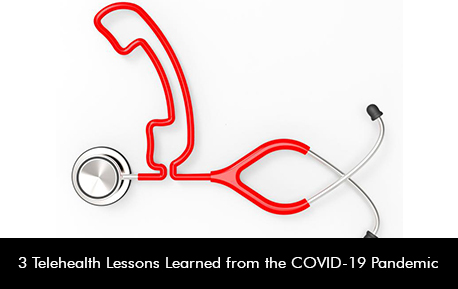Telehealth facility has been there for decades now but it hasn’t seen very rapid growth and adoption rates. Many patients feel more comfortable and satisfied seeing the doctor face to face and receive care in that manner.
With the COVID-19 pandemic outbreak, things have turned around for the world as people start to adopt social distancing and isolation to keep the spread of the virus in check. Federal Government is encouraging the use of the telehealth platform to reach patients remotely. Patients are scared to step out of their homes to visit the clinic and hospital facility and see telehealth as a safer alternative to receive timely care from the safety of their homes.
COVID-19 pandemic has highlighted the 3 key lessons that will have a positive impact on telehealth solutions in the long run.
Lesson #1: Acceptance is possible
Telehealth services are scaling at a pace due to many barriers reduced and conditions forcing health care providers and patients to reconsider the use of technology when it comes to healthcare. Before the pandemic struck California the number of telehealth visits was low for Stanford Children’s Health rising from 35 to 500 virtual visits in one day. This adoption trend is not going to reduce even after the pandemic because the telehealth platform allows patients to be treated remotely more competently. It also has the benefits of cost efficiencies and reduces stress for the health care providers. It was revealed that patients were satisfied by receiving care through the telehealth sessions and they are likely to schedule more telehealth visits in the future. The increase in patient interest in telehealth services will stimulate policymakers, doctors and insurance officers to completely adapt to a new healthcare model.
Lesson#2: Telehealth is an Effective Platform to Treat Patients
Telehealth EMR Systems is an effective solution to prevent hospital overcrowding and outpatient visits can be clinically managed virtually. Care can be continually provided to patients that are confined through high definition televists. Through the telehealth platform, health care providers were able to detect initial cases of the virus by questioning about symptoms without having to compromise on the quality of care. The usefulness and value of telehealth facilities cannot be ignored during and even after the pandemic.
Lesson#3: Logistics can be Provided Swiftly
The essential logistics can be established promptly when the need arises. This includes necessary training sessions that were required most, recruitment of staff personnel, and workflow with minimum interruptions. Training can be provided in crucial areas of virtual data capture, patient safety, and patient education which will enhance telemedicine experience and make it a comprehensive healthcare solution.
Resources:
Mark Dzuban, P. (2020). 3 Telehealth Lessons Learned from COVID-19 Pandemic – Telemedicine. Retrieved 22 April 2020, from https://hitconsultant.net/2020/04/10/telehealth-lessons-learned-from-covid-19-pandemic/
Telemedicine and the COVID-19 Pandemic, Lessons for the Future | Telemedicine and e-Health. (2020). Retrieved 22 April 2020, from https://www.liebertpub.com/doi/10.1089/TMJ.2020.29040.rb
Public Health in the Time of Covid-19: Three Lessons Learned. (2020). Retrieved 22 April 2020, from https://www.institutmontaigne.org/en/blog/public-health-time-covid-19-three-lessons-learned
Prepare providers for telemedicine: 3 critical training areas. (2020). Retrieved 22 April 2020, from https://www.managedhealthcareexecutive.com/hospitals-providers/prepare-providers-telemedicine-3-critical-training-areas/page/0/1







